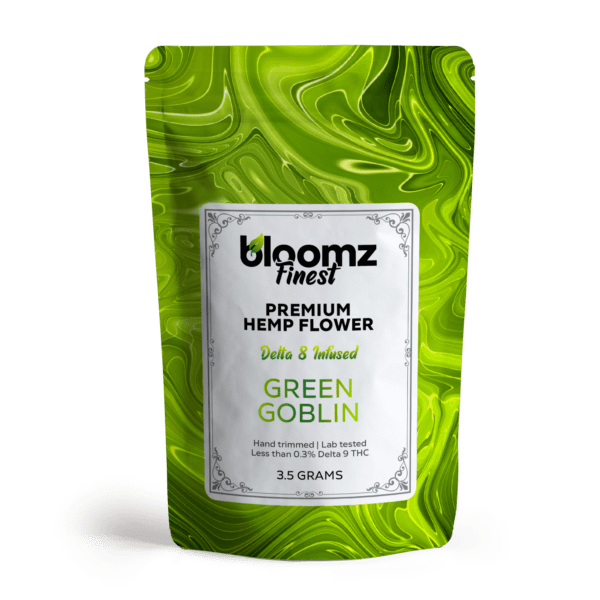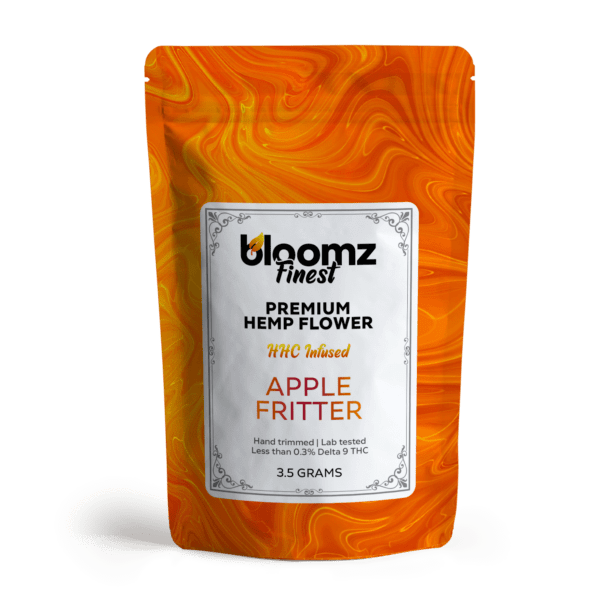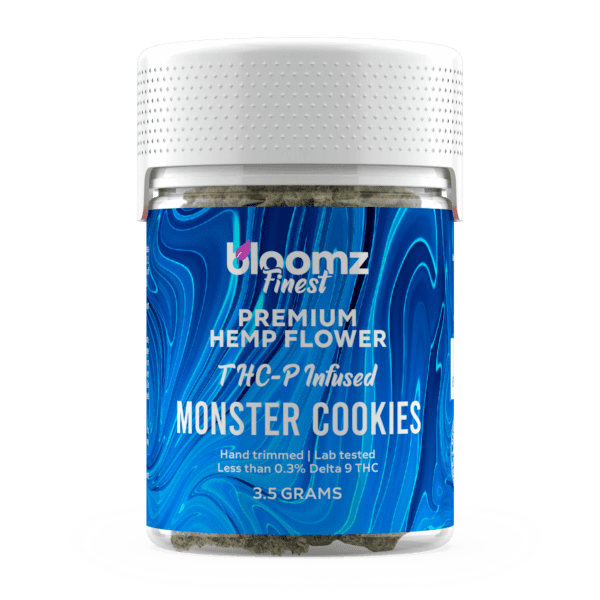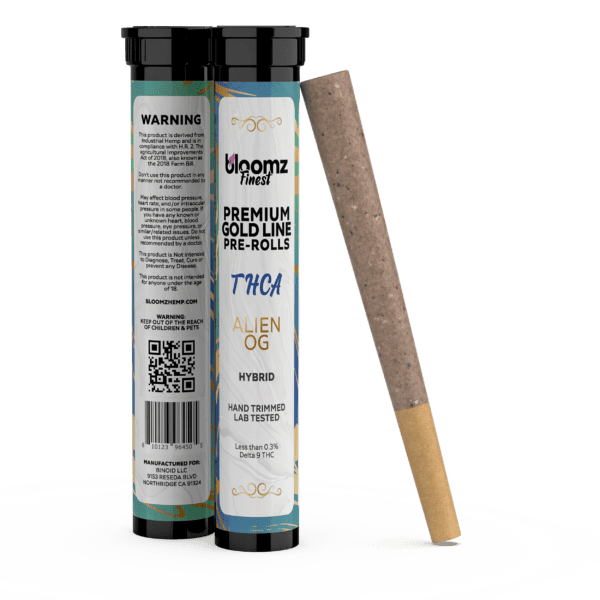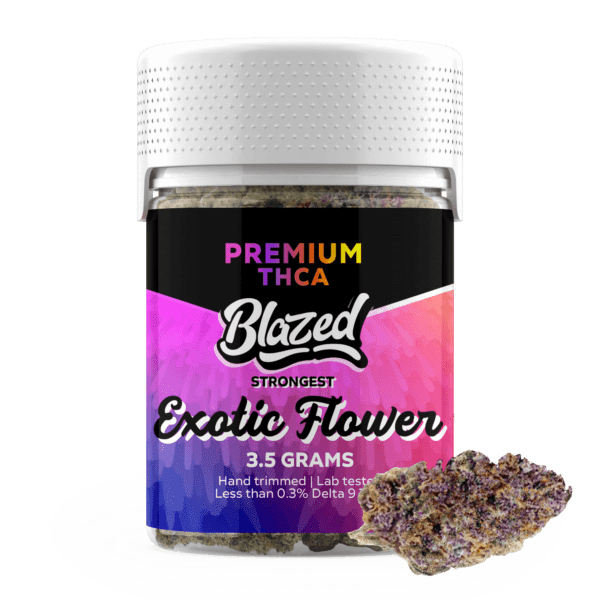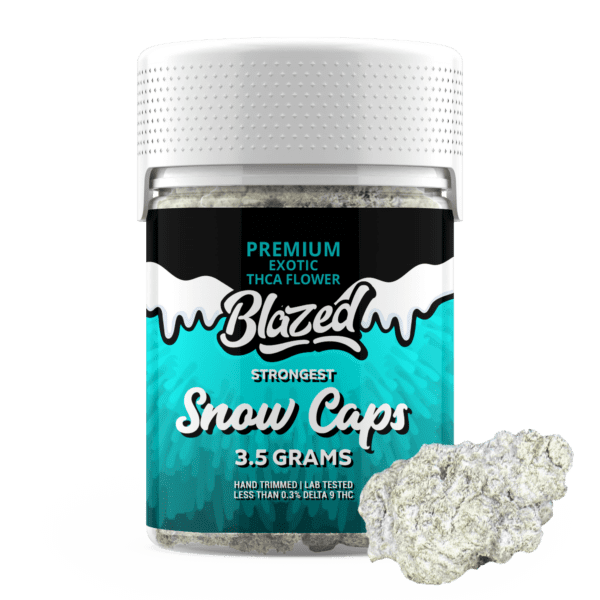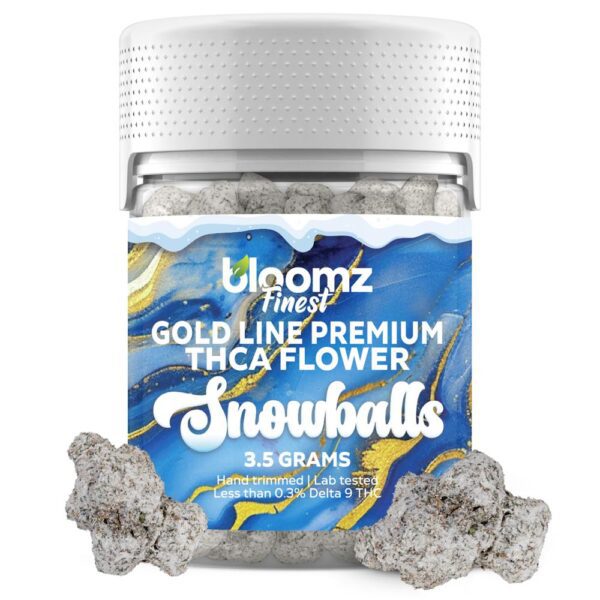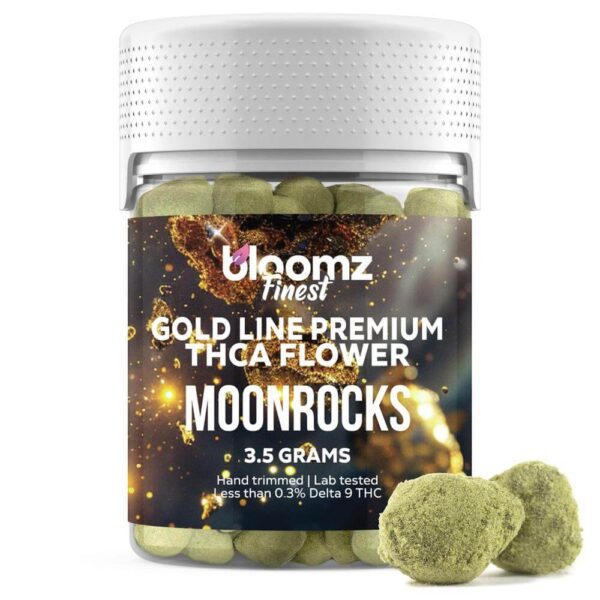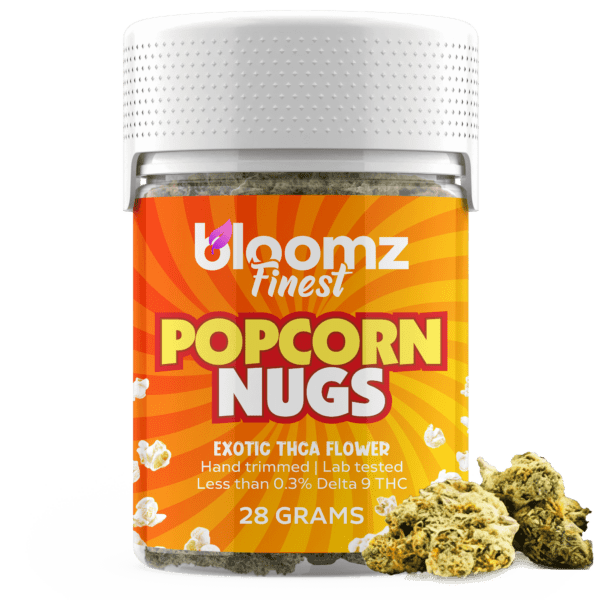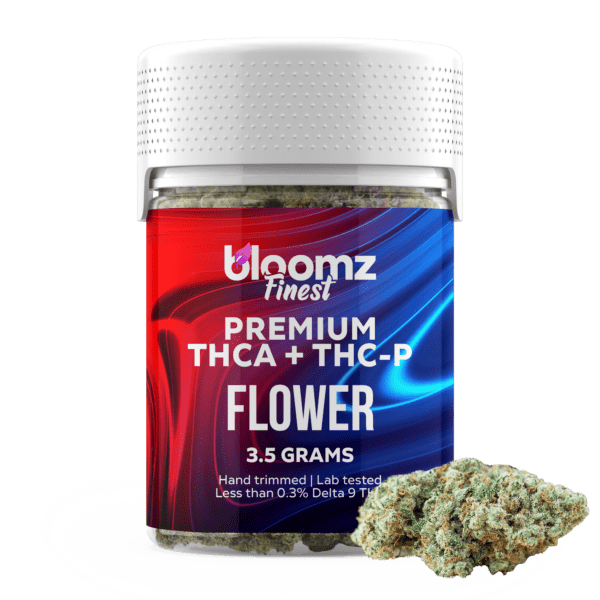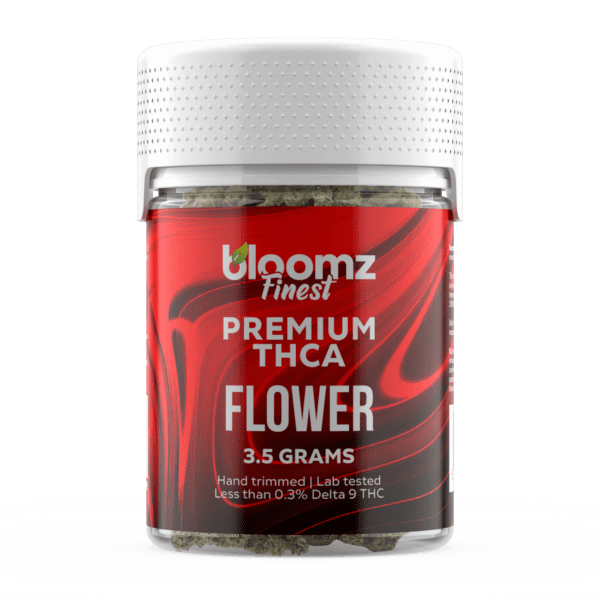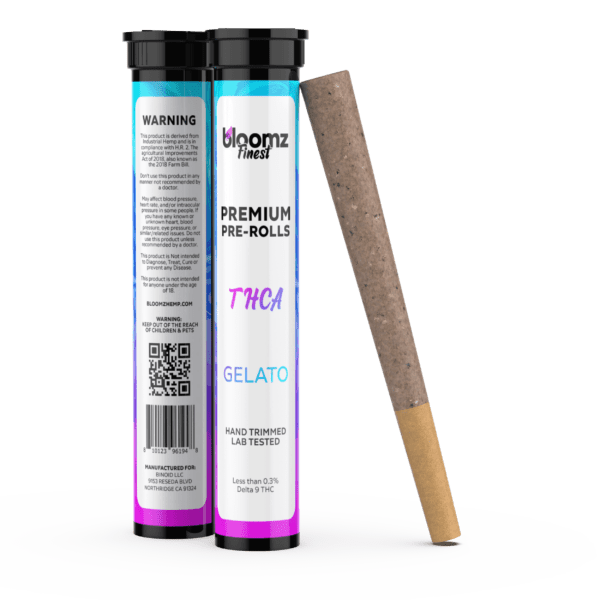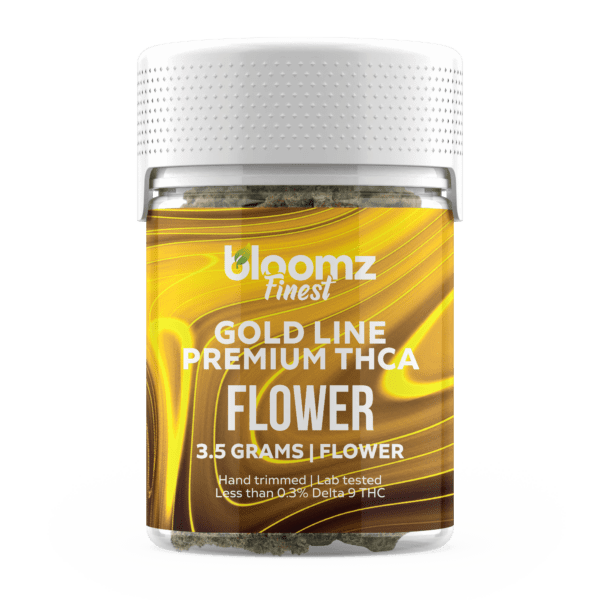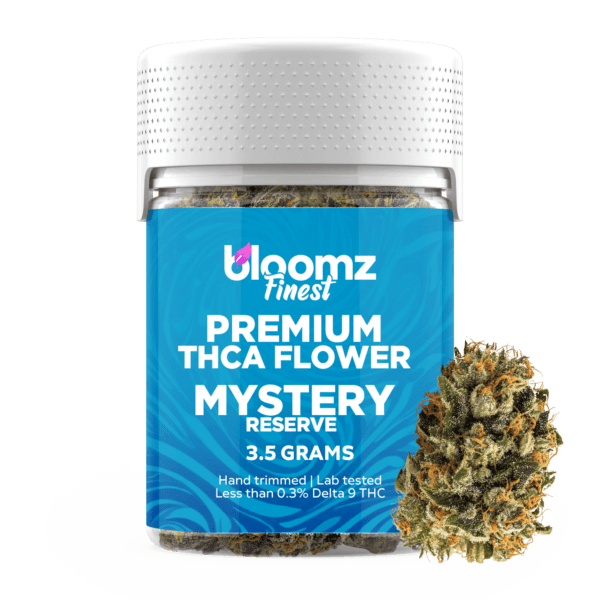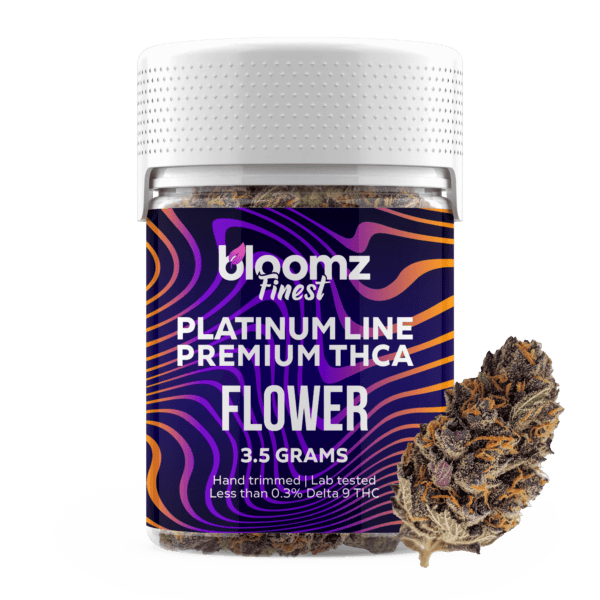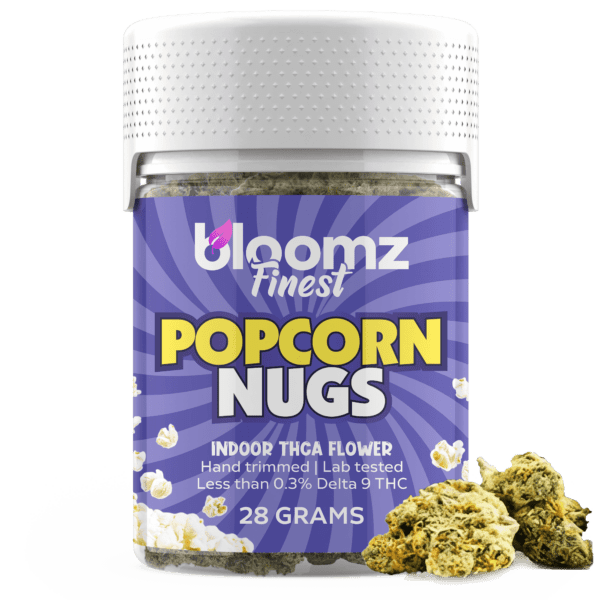The world of cannabinoids has expanded at a breathtaking pace, transforming from a simple, singular concept into a vast and intricate universe of compounds, each with its own unique story and characteristics. This rapid evolution, fueled by scientific breakthroughs and landmark legislation, has introduced a host of new players to the main stage, capturing the curiosity of enthusiasts everywhere. Among the most prominent of these newcomers is Delta 8 THC, a fascinating cousin to the more famous Delta 9 THC, which has given rise to an entirely new category of products.
This has naturally set the stage for a compelling comparison between Delta 8 THC Flower and its legendary predecessor, traditional weed. This matchup isn’t just about subtle chemical differences; it’s a deeper exploration of natural growth versus scientific innovation, and of how different legal pathways have created two distinct but related avenues to a cherished experience.
TO BUY DELTA 8 THC FLOWER CLICK HERE
Recommended products
Why It’s Important to Breakdown the Matchup of Delta 8 THC Flower vs. Weed
Dissecting the comparison between Delta 8 THC Flower and traditional weed is more than just an academic exercise; it’s an essential task for any consumer looking to navigate the modern cannabinoid market with confidence and understanding. The legal space created by the 2018 Farm Bill has become a fertile ground for innovation, leading to the widespread availability of hemp-derived compounds like Delta 8 THC.
However, the nature of these products, how they are made, and the experience they offer can be significantly different from traditional, state-legal cannabis. A thorough breakdown illuminates these crucial distinctions, empowering consumers to make informed choices that align with their personal preferences, legal circumstances, and desired outcomes:
-
Understanding the Fundamental Chemical and Experiential Differences: At the heart of this matchup are two distinct molecules: Delta 8 THC and Delta 9 THC. While they are chemically similar, this slight variation in their structure leads to a noticeably different interaction with the body’s endocannabinoid system. By breaking down this comparison, consumers can learn why Delta 8 is often described as providing a milder, more clear-headed, and less intense experience than the powerful effects of Delta 9 in traditional weed. This knowledge is crucial for setting accurate expectations and allows users to select the compound that is better suited to their tolerance and the type of experience they are seeking.
-
Clarifying the Production Methods and Product Nature: It is critically important to understand that “Delta 8 THC flower” and “weed flower” are fundamentally different in their creation. Weed is a naturally grown flower, cultivated to produce high levels of Delta 9 THC directly in its buds. In contrast, Delta 8 THC flower is a manufactured product, created by taking legal hemp flower (which is rich in CBD) and infusing or coating it with a Delta 8 THC distillate. Understanding this distinction between a natural, singular plant product and a combined, infused product is key to appreciating the differences in quality, consistency, and the overall nature of what the consumer is purchasing.
-
Navigating a Complex and Fragmented Legal Landscape: The legal status of these two products is vastly different and often confusing. Traditional weed is federally illegal but legal in certain states under their own specific laws. Delta 8 THC, derived from federally legal hemp, was for a time widely available. However, due to its intoxicating nature and the chemical process used to create it, many states have now moved to specifically ban or regulate Delta 8 products. A detailed breakdown is essential for consumers to understand the specific laws in their area, ensuring they can make purchases that are compliant and avoid potential legal trouble in a rapidly changing regulatory environment.
-
Promoting Informed and Safe Consumption: Because Delta 8 products exist in a less-regulated federal market compared to the stringent seed-to-sale systems of state-legal cannabis, the importance of consumer education is magnified. A thorough comparison encourages users to look beyond marketing and to prioritize brands that provide comprehensive, third-party lab testing for their products. By explaining what to look for in a Certificate of Analysis (COA)—including potency, solvents, and contaminants—this breakdown gives consumers the tools they need to vet products for safety and quality, fostering a safer market for everyone.
Contender #1: Delta 8 THC Flower
Stepping into the ring as a product of modern cannabis science and legislative opportunity, Delta 8 THC flower has carved out a significant niche for itself in the national market. It appears familiar, often presenting as beautiful, well-formed hemp buds that are visually appealing and aromatic. However, its true character lies not just in the plant material itself, but in the potent infusion that gives it its name and its unique effects.
Delta 8 THC flower is not something you can find growing in a field; it is a carefully crafted product that represents a fusion of high-quality hemp cultivation and sophisticated laboratory processing. It stands as a testament to the ingenuity of the hemp industry, which has learned to unlock the potential of minor cannabinoids and deliver them in a classic, smokeable format. For many, it has become a popular and accessible alternative, offering a novel experience that bridges the gap between non-intoxicating CBD and high-potency traditional weed.
To understand the flower, one must first understand the cannabinoid itself. Delta-8-tetrahydrocannabinol (Delta 8 THC) is a naturally occurring cannabinoid found in the cannabis plant. It is an isomer of the more abundant and famous Delta 9 THC, meaning they share the exact same chemical formula but have a slightly different molecular structure. Specifically, the location of a critical double bond in their carbon chain is different—it’s on the eighth carbon chain for Delta 8 and the ninth for Delta 9. This subtle structural difference has a significant impact on how the molecule interacts with the CB1 receptors in the brain, which is why its effects are noticeably different from those of Delta 9.
While Delta 8 is a natural component of the cannabis plant, it is only found in minuscule, non-commercially viable concentrations. Therefore, the vast majority of Delta 8 THC on the market is not directly extracted from the plant but is instead created in a lab through a chemical process called isomerization, where abundant, hemp-derived CBD is converted into Delta 8 THC.
Given this, it’s crucial to understand that “Delta 8 THC flower” is not a strain of cannabis that naturally grows rich in Delta 8, as instead, it’s a manufactured, composite product. The process begins with high-quality, legally grown hemp flower, which is naturally rich in CBD (cannabidiol) and contains less than 0.3% Delta 9 THC. This flower provides the physical structure, the terpenes for aroma and flavor, and the minor cannabinoids that contribute to the entourage effect.
This hemp flower then serves as the base which is infused or coated with a pure Delta 8 THC distillate, which is the potent, honey-like oil created through the isomerization of CBD. This process elevates the simple hemp flower into a potent, intoxicating product, delivering the unique effects of Delta 8 THC in a familiar, smokeable form. The quality of the final product is therefore dependent on two key factors: the quality of the initial hemp flower and the purity of the Delta 8 distillate it is infused with.
Recommended products
The creation of high-quality and effective Delta 8 THC flower is a multi-step process that combines expert cultivation with precise laboratory techniques. Each stage is crucial to producing a final product that is safe, potent, and enjoyable for the consumer:
-
Sourcing Premium Hemp Flower: The foundation of any good Delta 8 flower is the base flower itself. Reputable producers start with organically grown, premium-grade CBD or CBG hemp flower. This flower is cultivated for its beautiful bud structure, high terpene content (for flavor and aroma), and smooth smoking characteristics. The quality of this base material is paramount to the final user experience.
-
Creating Pure Delta 8 THC Distillate: In a separate laboratory setting, a highly technical process is used to create the Delta 8 THC. This begins with pure CBD isolate or distillate extracted from legal hemp. This CBD is then subjected to a chemical reaction (isomerization), using specific acids and catalysts in a controlled environment to rearrange its molecules into Delta 8 THC. The resulting crude oil is then further refined and distilled to create a pure, potent, and clean Delta 8 THC distillate, free of any residual solvents or reactants.
-
The Infusion Process: This is the key step where the flower and the distillate are combined. There are several methods for infusion. One common method involves lightly heating the distillate to make it less viscous and then spraying it evenly over the hemp buds. Another, more advanced method involves placing the flower in a vacuum chamber, removing the air, and then introducing the warmed distillate, which is then drawn deep into the plant material. A solvent-free cryo-infusion process is also used to ensure a clean and even coating.
-
Curing and Quality Control: After the infusion process, the now-sticky buds must be allowed to cure properly. This ensures that the distillate is evenly absorbed and that the flower is not overly moist, which is crucial for a smooth and even burn. Reputable brands will then test the final infused product to ensure that the Delta 8 THC potency is accurate and that the product remains compliant with the <0.3% Delta 9 THC limit.
-
Final Lab Testing: Just like other hemp products, the final batches of Delta 8 flower should be sent to an accredited third-party laboratory. This final COA verifies the potency of the Delta 8 and other cannabinoids and confirms that the product is free from any harmful contaminants like heavy metals, pesticides, or residual solvents from the infusion process, providing a final stamp of safety and transparency for the consumer.
The Delta 8 THC flower market offers a variety of product types and formats, much like the traditional cannabis and THCA flower markets. This selection allows consumers to choose a product that aligns with their budget, preferences for convenience, and desired level of potency. While the core product is an infusion of hemp flower and Delta 8 distillate, the different forms it takes can significantly alter the user experience:
-
Indoor Delta 8 Flower: This product begins with premium, indoor-grown CBD or CBG hemp flower. Indoor cultivation allows for meticulous control over the growing environment, resulting in a base flower that is typically denser, more visually appealing, and richer in terpenes than its outdoor counterpart. When this top-shelf hemp is infused with pure Delta 8 THC distillate, it creates the highest quality Delta 8 flower available, prized for its excellent flavor, smooth smoke, and beautiful appearance.
-
Outdoor Delta 8 Flower: For a more budget-friendly option, producers use outdoor-grown CBD or CBG hemp flower as the base. While it may lack the perfectly manicured look of indoor flower, high-quality outdoor hemp can be very rich in terpenes and provides a fantastic smoking experience. When infused with Delta 8, it becomes a highly effective and affordable product, offering great value for consumers who prioritize effects over aesthetics.
-
Delta 8 Smalls: “Smalls” refer to the smaller, popcorn-sized buds from a premium hemp harvest. Just as with other types of cannabis, these buds carry the same terpene profile and quality as the larger nugs from the same plant. By infusing these smaller buds with Delta 8 THC distillate, producers can offer a product with the same potency and flavor as the A-grade flower but at a significantly lower price point, making it a very popular choice for regular users.
-
Delta 8 Nugs: This refers to the main, A-grade buds from a premium hemp harvest that have been infused with Delta 8 THC. These are the larger, more visually impressive flowers that are often showcased by brands for their “bag appeal.” For consumers who appreciate the aesthetic quality and the ritual of handling a beautiful, well-formed bud, Delta 8 nugs are the standard choice for a top-tier flower experience.
-
Delta 8 Moonrocks: These are an extra-potent specialty product designed for experienced users. The creation of a Delta 8 Moonrock is a three-part process. It starts with a premium hemp flower bud, which is then coated in a sticky layer of Delta 8 THC distillate. Finally, the entire bud is rolled in a thick layer of CBD or CBG kief (the sifted trichomes from the hemp plant). This creates a super-concentrated product that is incredibly potent and slow-burning.
-
Delta 8 Pre-Rolls, Blunts & Joints: Offering the ultimate in convenience, Delta 8 pre-rolls are ready-to-smoke products that have been professionally filled with ground Delta 8-infused flower. They eliminate the need for any preparation on the part of the consumer. Available in various sizes and often packaged in single, protective tubes, pre-rolls are a perfect, hassle-free option for social settings or for those who want a simple, straightforward experience.
When discussing the “strains” used in Delta 8 THC flower products, it’s important to remember that the strain name refers to the base hemp flower that was used before the Delta 8 infusion. The intoxicating effects will be primarily driven by the Delta 8 THC, but the nuanced aspects of the experience—the flavor, the aroma, and the subtle shifts in mood—are heavily influenced by the terpene profile of the original CBD or CBG strain. Reputable producers will select hemp strains with robust and appealing terpene profiles to create a more enjoyable and well-rounded final product. They will then market these products under the original strain name, often categorized into the familiar families of:
-
Indica: When a Delta 8 flower is marketed with an Indica strain name (e.g., Bubba Kush, Special Sauce), it means the base hemp flower was an Indica-dominant variety. These strains are typically rich in terpenes like myrcene, which is known for its earthy, musky aroma and is often associated with relaxing effects. The combination of the calming terpene profile from the flower with the physical relaxation of the Delta 8 THC is intended to produce an experience that is deeply calming and perfect for evening use.
-
Sativa: A Delta 8 flower sold under a Sativa strain name (e.g., Lifter, Sour Space Candy) uses a Sativa-dominant hemp strain as its base. These hemp strains are often high in terpenes like terpinolene and limonene, which provide bright, citrusy, and piney aromas. The uplifting and fruity terpene profile of the Sativa flower is combined with the gentle cerebral euphoria of Delta 8 to create an experience that is intended to be more energizing, creative, and suitable for daytime activities.
-
Hybrid: Hybrid Delta 8 flower uses a hybrid hemp strain as its base, offering a balanced profile of terpenes. These strains (e.g., Hawaiian Haze, Elektra) are chosen for their well-rounded and appealing aromas that might combine fruity, earthy, and floral notes. The goal of a Hybrid Delta 8 flower is to provide a balanced experience that delivers the blissful effects of Delta 8 accompanied by a terpene profile that is neither overly sedating nor overly stimulating, making it a versatile choice for any time of day.
The legality of Delta 8 THC in the United States is one of the most contentious and rapidly evolving topics in the cannabis industry. Its legal argument originates with the 2018 Farm Bill, which legalized hemp and all of its derivatives, isomers, and cannabinoids, as long as the final product contains less than 0.3% Delta 9 THC. Because Delta 8 is an isomer of cannabinoids found in hemp and the final products are kept below the Delta 9 THC threshold, the industry has operated on the premise that it is a federally legal hemp product. This interpretation allowed for a massive gray market to emerge, with Delta 8 products being sold online and in stores across the country, particularly in states without legal recreational marijuana.
However, this status has been heavily challenged. Due to its intoxicating nature and the fact that it is created through a “synthetic conversion” of CBD, many states have taken action to specifically ban or severely regulate the sale of Delta 8 THC products, deeming them to be outside the spirit of the Farm Bill. The DEA has also issued opinions classifying synthetically-derived tetrahydrocannabinols as controlled substances, further muddying the waters. As a result, the legality of Delta 8 is not uniform and is subject to a complex and ever-changing patchwork of state laws and federal agency interpretations.
Delta 8 THC flower is used for many of the same purposes as other intoxicating cannabis products, though it is often sought after for its unique and characteristically milder effects. The consumption methods are identical to those used for traditional cannabis or THCA flower, as they all involve heating the plant material to release the active cannabinoids for inhalation or preparing it for ingestion.
Recommended products
The choice of method depends on the user’s preference for onset time, duration of effects, and the overall nature of the experience they are seeking. As an infused product, smoking or vaping Delta 8 THC flower effectively vaporizes the Delta 8 distillate along with the cannabinoids and terpenes from the base hemp flower, delivering the full profile of the combined product:
-
Vaping (using a portable or desktop vaporizer): Vaping is an excellent method for consuming Delta 8 flower, as it allows for a cleaner and more flavorful experience. A dry herb vaporizer heats the infused flower to a temperature that is sufficient to vaporize the Delta 8 THC and terpenes without combusting the plant material. This produces a smooth vapor that is less harsh on the lungs than smoke and allows the user to better taste the nuanced terpene profile of the base hemp flower. It is also a more efficient method, extracting more of the active compounds from the flower.
-
Smoking: This is the most straightforward and traditional method. By smoking the Delta 8-infused flower in a joint, pipe, or bong, the user rapidly heats the material, instantly vaporizing the Delta 8 distillate for inhalation. The effects are felt almost immediately, which allows for easy dose titration. While effective, this method does involve inhaling smoke and the byproducts of combustion, and it produces a strong odor that is not very discreet.
-
Cooking/Baking: Delta 8 flower can be used to make edibles, but the process is slightly different than with THCA flower. The Delta 8 THC in the flower is already active and does not need to be decarboxylated. However, the base hemp flower is likely rich in CBDA, so if the user wants to also activate the CBD, they would still need to go through the decarboxylation process (baking the flower at a low temperature). After that, the flower can be infused into butter or oil and used in recipes to create edibles that provide the combined effects of Delta 8 and CBD.
Delta 8 THC flower’s overall effects are what truly set it apart from traditional weed. The experience is driven by the Delta 8 THC molecule, which, due to its slightly different shape, binds to the CB1 receptors in the brain with less affinity than Delta 9 THC. This results in an intoxicating experience that is psychoactive but is widely reported to be significantly less potent and intense than that of traditional weed. Many users describe the Delta 8 “high” as being much more clear-headed and functional.
It can produce feelings of euphoria, bliss, and relaxation, but often without the racy thoughts or feelings of unease that can sometimes accompany high doses of Delta 9 THC. The experience is often characterized by a pleasant and calming body sensation, making it feel more physically relaxing than cerebrally overwhelming. For this reason, it is often cherished by individuals who are sensitive to Delta 9 THC or by those who want a more mellow, manageable euphoric experience.
Pros & Cons
Exploring the world of Delta 8 THC flower reveals a distinct set of advantages and disadvantages that are important for any consumer to weigh. These points highlight its unique position in the market, from its novel effects and initial accessibility to the concerns surrounding its manufacturing process and shifting legal status.
Pros:
-
A Milder, More Manageable High: The most celebrated advantage of Delta 8 THC is its characteristically milder psychoactive effect compared to Delta 9 THC. Many users report that it provides a pleasant sense of euphoria and relaxation without the intensity or potential for anxious feelings that can sometimes be associated with traditional weed. This makes it an appealing option for beginners or those with a low tolerance.
-
Clear-Headed and Functional Experience: Alongside its milder nature, the Delta 8 high is often described as being more clear-headed. Users frequently find that they can remain more focused, lucid, and functional while still enjoying a blissful and relaxed state of mind. This makes it a popular choice for engaging in creative activities or socializing without feeling overly sedated or mentally clouded.
-
Initial Federal Legality and Accessibility: Based on its origin as a derivative of federally legal hemp, Delta 8 THC flower became widely accessible across the United States, especially through online retailers. This provided a legal avenue for adults in many states without recreational cannabis laws to purchase an intoxicating cannabinoid product, dramatically expanding access for millions of people.
-
Affordable Price Point: Due to the efficient process of converting abundant CBD into Delta 8 and the competitive nature of the online hemp market, Delta 8 THC flower is often more affordable than traditional weed from a state-licensed dispensary. This cost-effectiveness makes it an attractive option for budget-conscious consumers.
-
Combines Effects with CBD/CBG: Since Delta 8 flower is made by infusing CBD or CBG hemp flower, the final product contains both Delta 8 THC and the rich cannabinoid and terpene profile of the base flower. This allows users to experience the unique effects of Delta 8 alongside the wellness properties of CBD and other minor cannabinoids, creating a well-rounded and synergistic experience.
-
Convenience of Online Shopping: The ability to purchase Delta 8 THC flower online and have it shipped directly to one’s door offers unparalleled convenience and discretion. Consumers can browse a vast selection of products from numerous brands, compare prices, and read reviews from the comfort of their home, a major advantage over the brick-and-mortar dispensary model.
-
Reduced Paranoia and Anxiety for Some Users: A significant amount of anecdotal evidence suggests that Delta 8 THC is less likely to induce feelings of paranoia or anxiety than Delta 9 THC. For individuals who are particularly sensitive to these side effects from traditional weed, Delta 8 can offer a much more comfortable and consistently positive experience.
-
Novelty and Variety: Delta 8 THC represents a novel cannabinoid experience that is different from both CBD and Delta 9 THC. For experienced cannabis users, it offers a new and interesting profile of effects to explore. The innovation in the hemp market has also led to a wide variety of infused products, giving consumers plenty of options.
-
Pleasant Body Sensation: Many users report that the effects of Delta 8 THC are particularly noticeable in the body. It is often described as providing a smooth, calming, and deeply relaxing physical sensation. This can be highly desirable for those looking to unwind and release physical tension at the end of the day.
-
Gateway to Understanding Cannabinoids: The popularity of Delta 8 has played a huge role in educating the public about the fact that “THC” is not a single molecule. It has sparked widespread curiosity and conversation about cannabinoid science, introducing concepts like isomers and minor cannabinoids to a mainstream audience and deepening the public’s understanding of the cannabis plant’s complexity.
Cons:
-
A Shifting and Uncertain Legal Status: The biggest drawback of Delta 8 THC is its precarious legal situation. Despite its initial widespread availability under the 2018 Farm Bill, many states have moved to specifically ban or regulate Delta 8 products due to safety and health concerns. This has created a confusing and rapidly changing legal patchwork, making it difficult for consumers to know if the product is legal in their specific location.
-
Lack of Consistent Regulatory Oversight: The market for Delta 8 products is not subject to the same strict, government-mandated regulations as the state-legal cannabis industry. This lack of oversight has led to concerns about product quality, with some tests revealing inaccurate potency labeling and the presence of harmful contaminants or residual solvents from the chemical conversion process in products from less reputable brands.
-
Concerns Over the Conversion Process: Since Delta 8 THC is created by chemically converting CBD, there are concerns about the safety of the process if not performed correctly. The use of acids and catalysts requires sophisticated laboratory equipment and rigorous post-processing to ensure all unwanted byproducts and residual chemicals are removed from the final distillate. The potential for unsafe products from amateur producers is a significant risk.
-
It is an Infused, Not a Natural, Product: Unlike traditional cannabis flower, Delta 8 flower is not a product of natural cultivation alone; it is a manufactured item. This can lead to inconsistencies in the final product. An uneven spray of distillate can result in “hot spots” on the flower with too much Delta 8, and the application of the sticky distillate can sometimes lead to a harsher smoking experience compared to a clean, natural bud.
Contender #2: Weed
Stepping into the other corner of the ring is the undisputed, long-reigning heavyweight champion of the cannabis world: traditional weed. This is the plant that has been celebrated in song, featured in countless films, and woven into the fabric of human culture for millennia. Known by a multitude of names—marijuana, pot, ganja, cannabis—its identity is inextricably linked to its primary active compound, Delta 9 THC, and the classic euphoric experience it produces. It is the benchmark against which all other intoxicating cannabinoids are measured, the original icon whose reputation precedes it.
For generations, weed has been the centerpiece of social rituals, a tool for creative inspiration, and a symbol of counter-culture movements. Its journey from ancient spiritual practices to modern, state-licensed dispensaries is a testament to its enduring appeal and profound relationship with humanity. In this matchup, it represents the established, the well-understood, and the powerful legacy of cannabis itself.
At its most fundamental level, “weed” is a colloquial term for the flower of the female Cannabis sativa plant that contains a significant concentration of Delta-9-tetrahydrocannabinol (Delta 9 THC) – the primary intoxicating compound in cannabis. Unlike THCA flower, which is defined by its low Delta 9 THC and high THCA content, traditional weed is legally defined (at the federal level in the U.S.) as any cannabis that exceeds the 0.3% Delta 9 THC threshold. The plant produces cannabinoids like THCA and CBDA, but through the natural processes of drying, curing, and aging, as well as exposure to light and ambient heat, a portion of the THCA converts to Delta 9 THC.
In traditional weed, this conversion has occurred to a degree that the final product for sale already contains more than 0.3% Delta 9 THC, placing it outside the legal definition of hemp. When consumed, the remaining THCA is also converted to THC by heat, but it is this initial, pre-existing Delta 9 THC content that forms the basis of its legal classification as marijuana. The overall experience is driven by a complex interplay between a full spectrum of cannabinoids, terpenes, and flavonoids, with Delta 9 THC leading the charge.
The history of weed is a rich and sprawling saga that is deeply intertwined with the history of human civilization itself, spanning continents, cultures, and millennia. Archaeological evidence suggests its use dates back to at least 10,000 BCE in Asia, where it was cultivated for its durable fiber (hemp) to make rope, clothing, and paper, as well as for its seeds as a source of food. Its psychoactive properties were also recognized early on; ancient Chinese texts, such as the pharmacopeia attributed to Emperor Shen Nung around 2737 BCE, mention cannabis as a substance for spiritual and ceremonial purposes.
From China, its use spread across Asia to India, where it became ingrained in religious rituals, particularly within Hinduism, celebrated as one of the five sacred plants. It then traveled along trade routes to the Middle East, Africa, and eventually Europe. It was introduced to the Americas by the Spanish in the 16th century. For centuries, it was widely used for industrial and wellness applications globally. The turning point towards prohibition in the United States began in the early 20th century, fueled by political and racial factors, culminating in the “Reefer Madness” propaganda era and the Marihuana Tax Act of 1937, which effectively criminalized the plant.
This was solidified by the Controlled Substances Act of 1970, which classified marijuana as a Schedule I drug. However, a counter-movement began to bubble up, and in 1996, California became the first state to legalize medical marijuana, setting off a wave of reform that continues to this day, with an increasing number of states legalizing it for recreational adult use.
The modern weed market is a vibrant and innovative space, offering a diverse portfolio of product types that cater to every imaginable preference and lifestyle. This evolution has moved far beyond simply selling dried flower, transforming the plant into a wide range of consumable goods that provide different experiences, potencies, and methods of delivery. From traditional smokeable options to precisely dosed edibles and highly concentrated extracts, this variety allows consumers to engage with cannabis in ways that best suit their comfort level, desired effects, and social setting.
This expansion of product categories has not only made cannabis more accessible to a broader audience but has also allowed for a more refined and customized user experience:
-
Flower: This is the most classic and traditional form of cannabis consumption. Flower refers to the dried, cured buds of the marijuana plant, which are sold loose in various weights (e.g., grams, eighths, ounces). Consumers can then use this loose flower to pack into bowls, pipes, or bongs, or they can grind it up and roll it themselves. For convenience, many dispensaries also offer pre-rolls and joints, which are pre-packaged, ready-to-smoke options that eliminate the need for any preparation. Consuming flower allows the user to experience the full, unaltered profile of a particular strain, including its unique aroma and flavor derived from its terpenes. The effects of smoking or vaping flower are felt almost immediately, making it easy to control the experience.
-
Edibles: Edibles are food and beverage products that have been infused with cannabis extracts. This category has exploded in popularity due to its discretion, ease of use, and the fact that it doesn’t require any inhalation. The variety is nearly endless, with gummies and candies being particularly popular for their precise dosing and long shelf life. Classic baked goods like brownies and cookies remain a staple, while the market has also expanded to include everything from infused chocolates and beverages to savory snacks and cooking oils. When consumed, the THC is processed by the liver, converting it to a more potent form called 11-hydroxy-THC. This results in a much more powerful and longer-lasting full-body experience compared to smoking, though the onset of effects is delayed, typically taking 30 minutes to 2 hours.
-
Pre-Filled Vape Cartridges: Vaping has become a preferred method for many due to its convenience, discretion, and perceived health benefits over smoking. Pre-filled vape cartridges, often called “carts,” are small, disposable containers filled with cannabis oil concentrate. These cartridges attach to a reusable battery (a “vape pen”) that heats the oil, creating a vapor that is inhaled. This method offers a potent, fast-acting experience similar to smoking but without the harshness or strong odor of burning plant material. Carts are available in a wide variety of strains and potencies, and their sleek, portable design makes them ideal for on-the-go use.
-
Concentrates: Also known as extracts or dabs, concentrates are highly potent products created by extracting the most desirable compounds—cannabinoids and terpenes—from the cannabis plant, leaving behind the excess plant material. This results in substances with extremely high THC levels, often ranging from 60% to over 90%. Concentrates come in many different textures and forms, including wax, shatter, budder, live resin, and rosin. They are typically consumed using a specialized device called a “dab rig” or a portable dab pen, which flash-vaporizes a small amount of the concentrate for inhalation. Dabbing provides a very powerful and immediate experience, and it is generally recommended for experienced users due to its high potency.
The legal status of traditional weed in the United States is a complex and fragmented issue, defined by a stark conflict between federal and state law. At the federal level, marijuana remains a Schedule I controlled substance under the Controlled Substances Act, placing it in the same category as heroin and LSD, which deems it to have a high potential for abuse and no currently accepted medical use. This federal prohibition means that any cultivation, sale, or possession of marijuana is technically illegal under federal law.
However, a significant and growing number of individual states have passed their own legislation in direct defiance of this federal stance. This has created a patchwork of legality across the country: some states have fully legalized marijuana for both recreational and medical use for adults over 21, some states permit it only for medical purposes with a doctor’s recommendation, a few have “decriminalized” small amounts (making it a civil infraction rather than a criminal offense), and others still maintain a complete prohibition. This federal-state conflict creates numerous challenges, particularly in areas like banking, interstate commerce, and taxation for cannabis businesses operating legally under state law.
The overall effects of consuming weed are primarily driven by its main psychoactive component, Delta 9 THC, interacting with the body’s endocannabinoid system. When THC enters the bloodstream and travels to the brain, it binds to cannabinoid receptors (primarily CB1 receptors), which in turn influences the release of neurotransmitters. This interaction produces the hallmark “high” associated with marijuana, a multifaceted experience that can vary significantly based on the strain, dosage, consumption method, and the individual’s unique physiology and mindset.
Generally, users can expect a sense of euphoria and an uplifted mood, often accompanied by laughter and a feeling of well-being. It can also alter sensory perception, making music sound richer, food taste more delicious, and colors appear more vibrant. Many people experience a profound state of relaxation and a “chilled out” disposition, while others might find it sparks creativity and new patterns of thought. The experience is deeply personal and can range from invigorating and social to calm and introspective.
Pros & Cons
Traditional weed comes with a well-established set of pros and cons, shaped by its long history, natural origins, and its complicated legal standing. Its advantages are rooted in its authenticity, the robust regulations of legal markets, and its cultural significance, while its drawbacks are largely tied to its potent effects and its ongoing federal illegality.
Pros:
-
A Natural, Plant-Based Product: Traditional weed is a product of natural cultivation. The cannabinoids and terpenes are produced within the plant’s own trichomes, not added or synthesized in a lab. For many consumers, this natural origin is a significant advantage, as they prefer to consume a product that is as close to its natural state as possible.
-
Strictly Regulated and Tested in Legal States: In states with legal cannabis markets, all products must undergo mandatory, comprehensive third-party lab testing. This rigorous seed-to-sale oversight ensures that products are free from harmful contaminants like pesticides, heavy metals, and mold, and that the potency is accurately labeled, providing a very high level of safety and quality assurance.
-
Potent and Powerful Effects: For experienced users or those seeking a powerful and profound experience, the high potency of modern weed is a major benefit. The strong psychoactive effects of Delta 9 THC can produce a deep sense of euphoria and bliss that is more intense than what is typically experienced with other cannabinoids like Delta 8.
-
Incredible Product Variety in Dispensaries: The legal weed market is incredibly innovative, offering a far greater variety of product types than the hemp market. Consumers in legal states can choose from a massive selection of flower, edibles, tinctures, topicals, beverages, and a dazzling array of complex concentrates, ensuring there is a product for every preference.
-
A Rich and Well-Understood Genetic History: Weed has been cultivated for centuries, resulting in thousands of well-known and stable genetic strains. Iconic Indica, Sativa, and Hybrid strains have predictable and well-documented effects, allowing consumers to reliably choose a product that will deliver the specific type of experience they are looking for.
-
In-Person Professional Guidance: The dispensary model provides consumers with access to knowledgeable budtenders. These trained professionals can offer personalized recommendations, answer questions about different products and consumption methods, and help guide users to a safe and enjoyable experience, which is an invaluable resource, especially for newcomers.
-
Deep Cultural Significance and Familiarity: Weed has a long and storied history in human culture, art, and society. This deep cultural penetration means that its effects and use are widely understood and familiar. This shared context can make it a more approachable and less intimidating product for many people compared to newer, more scientifically-named cannabinoids.
-
Driving Economic Growth and Tax Revenue: The legalization of weed has created a booming industry that generates thousands of jobs and stimulates local economies. The substantial taxes levied on cannabis sales also create a significant new revenue stream for states, which can be used to fund important public services like education and infrastructure.
Cons:
-
Federal Illegality: The most significant drawback is that weed remains illegal under federal law. This creates numerous legal and logistical challenges, from banking and tax issues for businesses to potential consequences for consumers regarding federal employment, housing, or international travel.
-
Potency Can Be Overwhelming: The high potency of modern weed, while a pro for some, can be a major con for others. For inexperienced users or those with a low tolerance, the intense effects of Delta 9 THC can be overwhelming and may lead to an unpleasant experience characterized by feelings of anxiety or paranoia.
-
Limited Legal Access: Access to legal, tested weed is entirely dependent on your location. If you do not live in or near one of the states that have legalized it, you have no legal way to purchase it. This creates major geographic disparities in access to safe and regulated products.
-
Higher Cost: Due to heavy state and local taxes and the high cost of regulatory compliance, products from a legal dispensary are often significantly more expensive than products from the hemp-derived or illicit markets. This high cost can be a barrier for some consumers.
-
Persistent Social Stigma: Despite growing acceptance, a social stigma against weed use can still exist in many communities and professional environments. Many employers, even in legal states, still test for THC as a condition of employment, which can have serious consequences for an individual’s career.
How to Go About Choosing Which Option
Making the choice between Delta 8 THC flower and traditional weed is a decision that rests on a nuanced understanding of their core differences and a clear assessment of your own personal priorities. This is not a matter of which one is objectively “better,” but rather which one is the right fit for your specific needs, tolerance, and legal situation. The two products offer distinct experiences, are created through fundamentally different processes, and exist in separate legal spheres. By carefully considering the kind of experience you are seeking, your comfort with a manufactured versus a natural product, and the laws in your state, you can make a confident and well-informed choice.
Your first consideration should be the type of experience you desire. Are you seeking a powerful, intense, and profoundly euphoric high? If so, the high concentration of Delta 9 THC in traditional weed is likely the better choice for you. However, if you are new to THC, have a low tolerance, or have found traditional weed to be too overwhelming in the past, the milder, more clear-headed, and less intense effects of Delta 8 THC flower could be a perfect alternative. It offers a way to enjoy a blissful and relaxing experience with a reduced risk of feeling anxious or overly intoxicated.
Next, consider the nature of the products themselves. Do you have a strong preference for a natural, plant-based product that is consumed as it was grown? If so, traditional weed flower, which is simply the cultivated and cured bud of the cannabis plant, aligns with this value. On the other hand, if you are comfortable with and interested in products created through modern scientific processes, then the manufactured nature of Delta 8 flower—a hemp flower infused with a scientifically converted cannabinoid—will not be a concern. This choice often comes down to a personal preference for natural simplicity versus technological innovation.
Finally, and most practically, you must assess your legal situation. Do you live in a state with a legal, adult-use cannabis market? If yes, you have the luxury of choosing between both products. However, if you live in a state where weed is illegal, you must then investigate the specific laws regarding Delta 8 THC. While it may be a legal option for you, it is crucial to confirm this, as many states have moved to ban it. Your location and its specific laws will ultimately be the most significant factor in determining which products are legally accessible to you.
|
Feature |
Delta 8 THC Flower |
Weed (Traditional Marijuana) |
|---|---|---|
|
Primary Cannabinoid |
Delta 8 THC (infused) |
Delta 9 THC (naturally occurring) |
|
Nature of Product |
A manufactured product (hemp flower + D8 distillate) |
A natural, cultivated plant flower |
|
Potency/Experience |
Milder, clearer-headed, less intense high |
Potent, intense, powerful high |
|
Federal Legal Status |
Complicated; initially legal as hemp, now banned in many states |
Illegal (Schedule I Controlled Substance) |
|
State Legal Status |
Varies widely; legal in some states, banned in others |
Legal for recreational use in some states, illegal in others |
|
Primary Purchase Method |
Primarily online |
In-person at state-licensed dispensaries |
|
Production Process |
CBD is chemically converted to Delta 8 and infused onto flower |
Flower is cultivated to naturally produce high levels of THC |
|
Regulatory Oversight |
Less regulated federal market; quality varies by brand |
Heavily regulated by state agencies with mandatory testing |
|
Key Advantage |
Milder, more manageable effects for sensitive users |
Natural origin and robust safety testing in legal markets |
Choosing Your Altitude
In the end, the matchup between Delta 8 THC flower and traditional weed is a clear illustration of the incredible diversity that now defines the cannabis landscape. It’s a choice between natural potency and scientific moderation, between a product grown by the sun and one perfected in the lab. There is no universal champion, only a personal preference. Your decision is a reflection of the experience you seek—be it a gentle, blissful cruise at a lower altitude with Delta 8, or a powerful ascent to the stratosphere with traditional weed. By arming yourself with knowledge of their differences in effects, creation, and legality, you can confidently navigate your options and choose the journey that is perfectly charted for you.
TO BUY DELTA 8 THC FLOWER CLICK HERE
Recommended products
-
THCA Flower – Indoor Exotics – Gold Line
$37.99$69.99 -
THCA Flower – Mystery Reserve
$41.99$79.99 -
THCA Flower – Platinum Line
$49.99$79.99 -
THCA Smalls
$149.99$256.99

